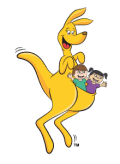By Bindy Cummings and Dr Tessa Grigg
Is it a good idea for children to hear two or more languages? Will children from a bilingual home have delayed language? Is having two languages confusing for a child? This article will shed some light on these questions and help you understand the importance of the earliest years for bilingualism.
Information about how children learn languages has developed alongside the increase in available technology. Babies are listening to the languages that are spoken around them and are absorbing and ‘taking statistics’ on the sounds they need.1
“The modern tools of neuroscience are demonstrating to us that what is going on in baby’s brains is nothing short of rocket science”. reports the world-renowned neuropsychologist Patricia Kuhl in her TED talk – ‘The Linguistic Genius of Babies’. She states: “Babies and children are geniuses at acquiring a second language until they turn seven, and then there’s a systematic decline. After puberty, we fall off the map’. Importantly, something incredible is happening in a baby’s first year that is of great significance to learning a language.2
See Kuhl’s full TED Talk here: http://www.ted.com/talks/patricia_kuhl_the_linguistic_genius_of_babies?utm_source=newsletter_daily&utm_campaign=daily&utm_medium=email&utm_content=button__2014-10-18#t-364531
The first critical period for language development is the period in which babies try to master which sounds are used in their language. The research undertaken by Kuhl and her team has shown that babies of the world, at six to eight months of age, can discriminate all the sounds of all languages, no matter what country or language! Their brains are totally equivalent to all sound discrimination. Adults can’t do this because we have become what she terms ‘culture-bound’ listeners1. Our brains can only discriminate the sounds of our own language, not those of foreign languages.
So, when do babies turn into the language-bound listeners that we adults are? The answer she says – “before their first birthday”.2
During this first critical period for sound development, babies prepare for exactly the language that they are going to learn. They do this by listening intently to us as we talk and by ‘taking statistics’. Each baby takes on the statistics of the language that they hear. The statistics of each language are very, very different. Kuhl explains: “Babies absorb the statistics of the language, and it changes their brains; it changes them… to the culture-bound listeners that we adults are”. We, as adults, are no longer absorbing those statistics. Of course, we can still learn a different language, it’s just much harder, takes much longer and the individually specific, just noticeable differences in sound statistics for each language are no longer recognised by our brains, dramatically reducing our chances of ever sounding native in a different language. This shift towards being culture-bound listeners begins after six to eight months of life.
To determine if babies could take on statistics from a brand-new language during this critical period, Kuhl’s research team exposed six to eight-month-old American babies, who had never heard a second language, to Mandarin for the first time. The astonishing results showed that these babies did indeed successfully take on this new set of sound statistics. At this age, “whatever you put in front of them, they’ll take statistics on”. Their research shows that once this critical period has passed, the ability to learn language material slows down.
On bilingualism, Kuhl’s team proposed “Bilinguals must keep two sets of statistics in mind at once and flip between them, one after the other, depending on who they’re speaking to”.
The team also trialled this language exposure to babies via human interaction verses television. The result with the television – no learning whatsoever! “The social brain is controlling when the babies are taking their statistics. It takes a human being for babies to take their statistics,” says Kuhl.
What parents can do to give their child the gift of a second language.
- If two languages are spoken in your home or family, experts suggest that the best way to do this is to adopt a ‘one person, one language’ approach. For instance, if one carer uses the second language exclusively, this helps babies and children separate the two sets of statistics and learn both languages more easily. It is actually possible to successfully introduce as multiple languages simultaneously, provided you can offer enough exposure and need for each one. We love hearing a variety of languages at GymbaROO-KindyROO!
- If you are not a native speaker but would like to expose your little one to another language, you might consider hiring a babysitter or a nanny who speaks another language, and stick to the ‘one person, one language’ rule i.e., the carer only speaks their native tongue to your children. You could also find out about bilingual childcare centres playgroups and schools, though bear in mind the importance of the early critical period for sound exposure
Most importantly, encourage your child’s bilingual language development and relax about the finer details of grammar and sentence structure. It is enjoyment, exposure and those sound statistics that are the keys to fostering a rich language experience. Find out more about bilingualism in another of our articles here: Bilingual Babies. One language or two? https://activebabiessmartkids.com.au/articles/bilingual-babies-one-language-two/?v=322b26af01d5
References:
- Ferjan Ramirez N, Kuhl P. Bilingual Baby: Foreign Language Intervention in Madrid’s Infant Education Centers. Mind, Brain, and Education. 2017;11(3):133-43.
- Huber E, Ferjan Ramírez N, Corrigan NM, Kuhl PK. Parent Coaching from 6 to 18 Months Improves Child Language Outcomes through 30 Months of Age. Developmental Science. 2023;26(6).
Authors:
Dr Tessa Grigg (PhD, Dip Tch Primary and ECE) is an experienced teacher and the Research and Education Manager at GymbaROO-KindyROO.
Bindy Cummings (B.Ed hons) is a teacher, a GymbaROO early childhood neuro-developmental consultant and the co-creator of GymbaROO’s Active Babies Smart Kids series. She has been writing articles for GymbaROO’s First Steps magazine, digital platforms and media for over fifteen years.

